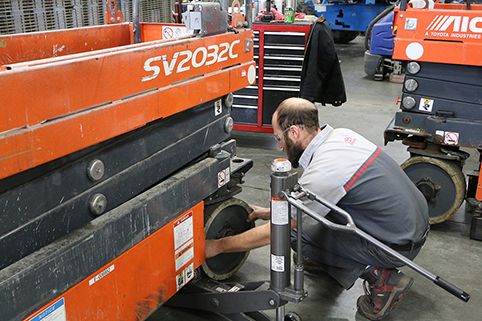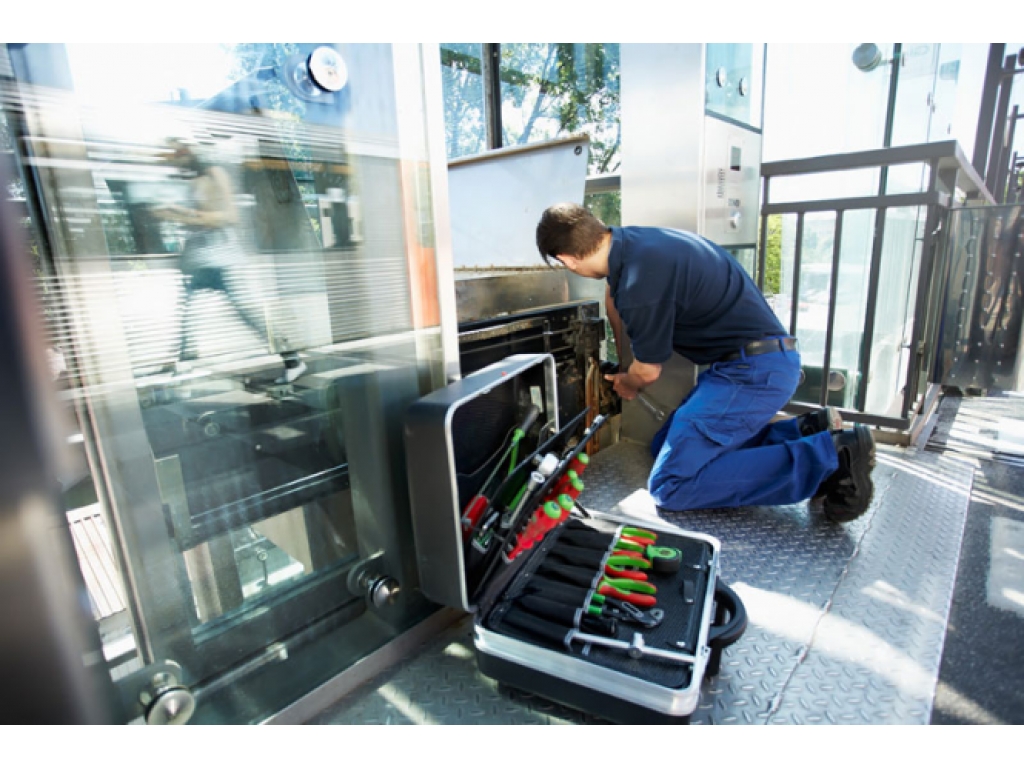System Lift Capacities Explained: Why They Issue for Lift Servicing
System Lift Capacities Explained: Why They Issue for Lift Servicing
Blog Article
An Extensive Approach to Enhancing Efficiency With Strategic Lift Repair Approaches
In the realm of center management, the performance and reliability of lifts play a critical function in ensuring smooth procedures. A critical and systematic technique to raise repair and maintenance is essential to maximize performance and minimize downtime. By dealing with typical lift issues, applying proactive maintenance actions, and creating targeted repair work strategies, facilities can optimize their lift systems to run at peak efficiency degrees. The key to accomplishing sustained enhancement lies in using data-driven understandings to notify decision-making procedures and drive constant improvement - lift repair. This thorough strategy to boosting lift efficiency with calculated repair service methods holds the pledge of not just enhancing operational effectiveness however also extending the lifespan of lift systems.
Importance of Lift Performance Optimization
Recognizing the importance of maximizing lift performance is critical for guaranteeing efficient and trusted vertical transport systems in different structures and structures. Lifts are important parts of contemporary infrastructure, supplying vertical wheelchair for occupants and items within buildings of differing heights. By enhancing lift efficiency, building proprietors and facility managers can boost individual experience, boost energy performance, and increase general functional efficiency.
Reliable lift performance optimization includes various factors, including rate, capacity, energy consumption, maintenance, and safety and security needs. Correctly maximized lifts can lower wait times for customers, especially in high-traffic buildings, causing boosted complete satisfaction and performance. Additionally, maximized lifts add to power savings by using innovative control systems and technologies that reduce power intake without jeopardizing performance.

Identifying Common Lift Issues
Recognizing common lift problems is crucial for maintaining the functional performance and security of upright transport systems in buildings. Acknowledging these issues can assist protect against malfunctions, minimize downtime, and expand the life expectancy of the lift equipment. One typical issue that structure managers and upkeep groups commonly experience is irregular or jerky motions throughout operation. This problem can be a measure of problems with the lift's motor, control system, or perhaps the alignment of the lift vehicle.
One more prevalent lift problem is unusual noises originating from the lift shaft or machinery space. These noises can range from grinding or scraping sounds to loud clunking noises, all of which might signify underlying mechanical concerns that call for instant interest. Furthermore, regular door malfunctions, such as doors closed or closing properly, can disrupt the smooth circulation of guests and present security dangers.
Executing Proactive Upkeep Steps
To maximize the efficiency and durability of lift systems, positive maintenance actions play a crucial duty in making certain functional dependability and safety. platform lift dimensions. Executing proactive upkeep includes systematically inspecting, maintenance, and repairing components prior to they stop working, thus protecting against expensive downtime and potential safety and security dangers. Frequently scheduled examinations can assist identify small problems prior to they escalate right into major troubles, ultimately expanding the lifespan of lift systems
One trick element of aggressive maintenance is developing a comprehensive upkeep routine based upon manufacturer recommendations and sector ideal methods. This timetable must describe jobs such as lubrication, alignment checks, and element substitutes at specified periods. Additionally, carrying out problem monitoring strategies, such as vibration analysis and thermal imaging, can assist detect very early indicators of wear or malfunction.
Moreover, training upkeep staff on appropriate examination techniques and precautionary upkeep treatments is important for the successful execution of proactive maintenance actions. By cultivating a society of proactive maintenance within an organization, lift systems can run at peak efficiency degrees, reducing interruptions and making certain the safety and security of users.
Establishing Targeted Repair Service Plans
Upon examining the upkeep records and performance data, the engineering team can develop targeted repair strategies to enhance and attend to particular issues lift system functionality. These fixing strategies are tailored to the identified problems, making certain that sources are concentrated on fixing vital issues efficiently. By focusing on repair work based on their effect on efficiency official site and safety, the targeted repair strategies help reduce downtime and upkeep costs while optimizing the lift system's dependability.
Developing these strategies includes an extensive analysis of the lift system parts, including electric motors, cable televisions, brakes, and control systems. Through this thorough evaluation, the design team can establish the origin causes of any kind of malfunctions or destruction in performance. This details is after that utilized to develop a roadmap for the repair service process, laying out the required actions, timeline, and resources needed to address each problem effectively.
In addition, targeted repair work strategies might include preventative actions to enhance the lift system's durability and efficiency. By proactively dealing with possible issues dig this prior to they escalate, these strategies add to the overall performance and safety of the lift system.
Making Use Of Data-Driven Insights
Utilizing the power of data-driven understandings is important in optimizing lift system performance and upkeep efficiency. By leveraging information analytics, lift operators can make informed choices that lead to enhanced functional efficiency and price financial savings. With the evaluation of historical performance data, patterns and patterns can be identified, making it possible for anticipating maintenance techniques to be carried out. These anticipating upkeep strategies help prevent unexpected malfunctions, minimize downtime, and prolong the life-span of lift systems.

Conclusion
To conclude, enhancing lift efficiency is critical for guaranteeing efficiency and safety in buildings. By identifying common lift problems, executing positive upkeep procedures, creating targeted fixing strategies, and making use of data-driven understandings, organizations can boost performance and lessen downtime. It is necessary to take an extensive technique to raise repair service methods you can try this out to take full advantage of operational efficiency and guarantee the durability of lift systems.
By dealing with common lift issues, implementing aggressive upkeep procedures, and creating targeted fixing strategies, facilities can optimize their lift systems to run at peak efficiency levels.Another widespread lift concern is odd noises rising from the lift shaft or equipment space.Upon examining the maintenance records and efficiency information, the engineering team can create targeted repair service plans to deal with particular issues and optimize lift system capability. By focusing on repair services based on their impact on efficiency and safety and security, the targeted repair service strategies help decrease downtime and upkeep costs while optimizing the lift system's dependability.
It is essential to take a detailed method to lift fixing approaches to make the most of operational performance and make certain the durability of lift systems.
Report this page